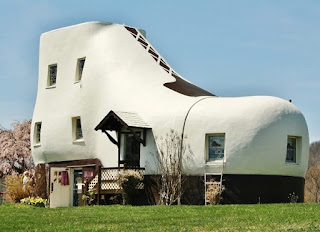#51 Learning Your Home
Almost
all would agree: Structures and their
surrounding property have “Personalities!”
Those personalities reflect many factors that reach all the way back to
the original architects and designers, through all the owners and residents –
each leaving their marks, over time.
Some perfect external examples might be how individuals groom their
landscapes, or how they decorate to celebrate holidays!
Your
home’s personality has been seriously influenced by weather patterns, various extraordinary
occurrences, geography, and even by its neighbors! Much
of your home’s personality was intentionally bestowed – its contours,
materials, paths and landscaping. And,
over time, both gracious modifications and troubling realities have left their
marks.
It’s
important to understand the new responsibilities that are related to the
overall condition of your new home. When
a homestead becomes someone’s new home, it’s important to learn that home – its
realities, both wonderful and wanting. Those realities are directly connected to your
energy, time, money and satisfaction!
Much
of your decision to buy a particular house and grounds is influenced by the
parts of its personality that are most obvious.
Outside? What is the orientation
relative to the sun’s path? Are there
wildlife issues? What are the drainage
considerations? Are there “neighboring
property” issues such as shared fencing, easements and such? Inside?
Search out possible patterns of wear, water leaks, odd floor plan
characteristics and window/sun orientations.
Internal systems should be tested for age, function and performance;
learn everything from efficiency to the sounds they broadcast when in use!
Home
personalities vary greatly with regard to their age. Each reflects the styles and trends of the
time when they were built. And those
times and trends usually signal characteristics typical of their category. Sometimes that bodes very well, sometimes
not! The very old – vintage, if you
prefer – reflect the lifestyles of people of their era, as well as the appointment
“capabilities” of the era! That can be
quaint, or that can be a real set of annoyances! You may have included some responsibility
stipulations in your purchase agreement that relate to repairs or upgrades to a
very old property. Learning the truth
about older structures should be high on your list – not necessarily a
negative, just things to be handled!
Newer
houses (but, not brand new) have very different “personalities.” They have compliance characteristics that
are specific to newer home building specifications. Different from older homes, newer have been
subject to much more control and many contemporary rules and regulations. Getting to know your newer new home may be a
bit more comfortable just because it is closer to your own era! It
will still present its own idiosyncrasies that will reveal themselves as you
move in -- and settle in. The potential
of the house itself, the neighborhood and the region will present both positive
and negative challenges. For one thing,
newer homes (that are not custom homes on larger tracts of land) are usually
built closer to the other homes in the neighborhood. Sound, light, pets and maintenance become
larger issues when there is less space between properties. Learning your part by learning the
characteristics of your new home can make all the difference for you and your
family – both internally and externally.
Now
that you are moved in and getting settled, it is inevitable to investigate,
look and listen to the heartbeat of the new environment. It will speak to you about all its secrets! Its personality will begin to change as you
make your own marks on its space and structure.
The changes you make become part of its history – older or newer – as
your home now!




Comments
Post a Comment